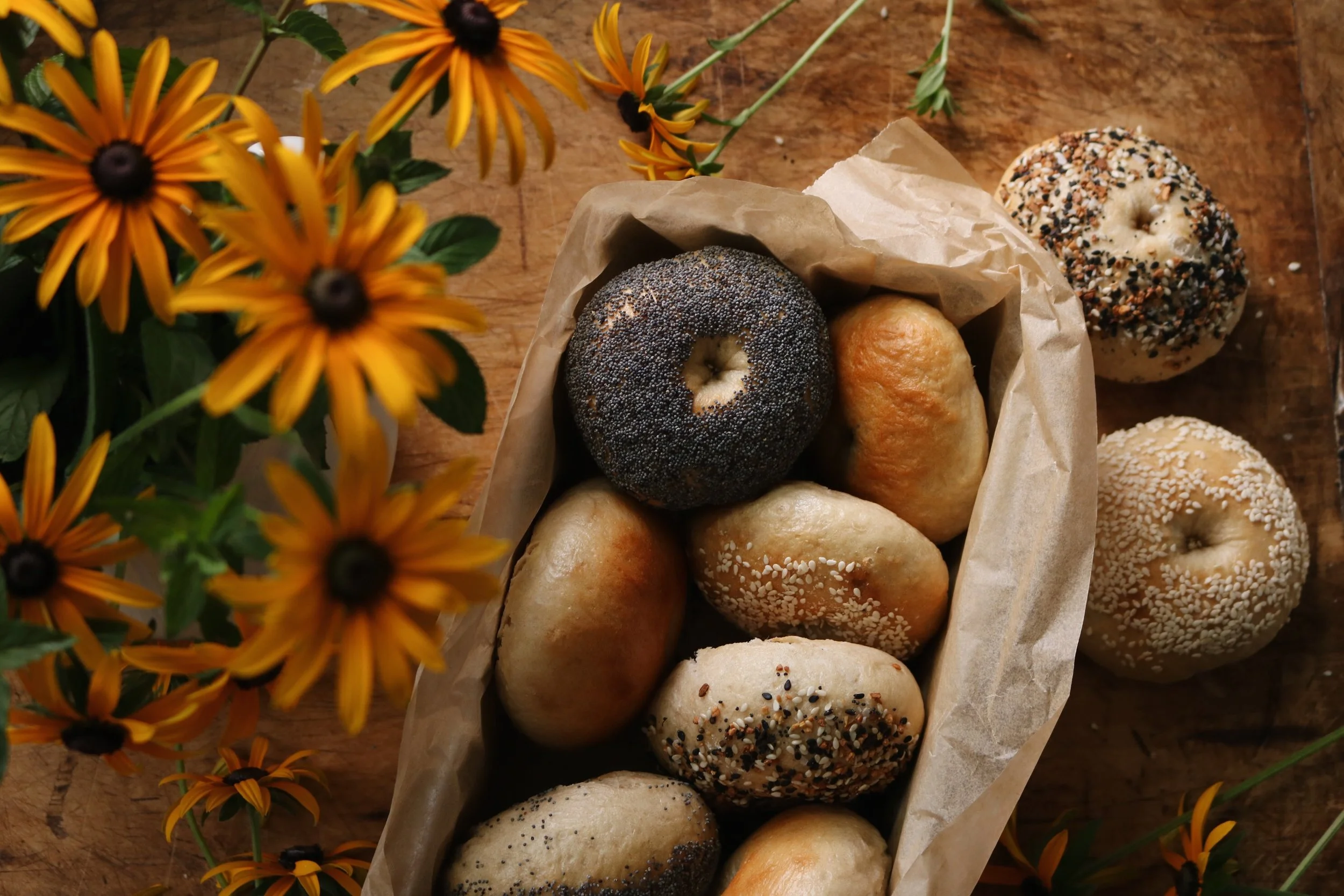Sourdough Simplified: Rustic Sandwich Loaf
why sourdough simplified?
When I began my sourdough journey over 3 years ago, I was completely overwhelmed. Sourdough seems to be one of those things where everyone has their own method and each method is different, but they all seem to work just the same. It’s confusing to know where to start and who to listen to.
When I cultivated my first starter, it felt like a success! However I had no idea what to do with it next, and I didn’t have a bread recipe. I spent hours upon hours reading different methods and recipes and ended up incredibly frustrated.
I didn’t want to bake a fancy artisan loaf. I didn’t want to buy a kitchen scale or a banneton basket. If Ma Ingalls could make sourdough without a kitchen scale, so could I. (One of the biggest pieces of advice I see amongst sourdough circles is to invest in a good kitchen scale. You certainly can if you’d like, but it’s not absolutely necessary.) I wanted to use my measuring cups and the tools I already had. I also wanted a simple method of keeping and feeding my sourdough starter that didn’t create a lot of excess discard.
After much trial and error I’m at the place where I am pretty confident in my sourdough making. My loaves are not professional by any means, but they are exceptionally frugal to make, traditionally fermented therefore easy to digest, and taste delicious!
I started my “Sourdough Simplified” series to share my methods and tips I’ve learned along the way. This is not the only way to do things by any means. But it’s one way, and I do find it to be much simpler than some of the methods I’ve come across. Keeping the breadbox full shouldn’t be a task that takes a lot of time or effort. It should be—simple.
I don’t use a scale, just good ole fashioned measuring cups. I’ll be honest, I’m at the point in my bread making where I don’t measure anything except the salt and the water. Dollop in a little starter, add in more flour until it reaches the consistency I know from sight and from touch, and we’re good to go. That’s because I’ve been making this recipe for over 3 years and I know it like the back of my hand. You’ll get there too.
It will take some time to learn what proper hydration looks like, how different weather and different seasons requires more or less flour. Practice, practice, practice! Don’t be afraid to make “ugly” loaves at first. As long as you didn’t forget the salt or bake it to oblivion, it’s going to be edible no matter what it looks like. Plus, the goal is not an “instagram worthy” loaf, the goal is a frugal, digestible, delicious loaf that feeds the family.
In the third post of this series I am sharing my Rustic Sandwich Loaf recipe. This is very similar to my Rustic Country Loaf, with only a few changes to make it a soft sandwich bread instead of a crusty boule. We are going to add a bit of oil and honey, and bake it in a bread pan on a gentler temperature instead of on high in a dutch oven.
This recipe yields one loaf. Let’s dive in!
what you need:
1/2 cup of active, bubbly sourdough starter
1 1/3 cup of filtered water (room temp or slightly warm)
2 tablespoons of local honey
2 tablespoons of avocado oil or melted butter
3 1/2-4 cups of organic unbleached, unbromated all-purpose flour
1 1/2 teaspoons of sea salt
Loaf pan
baker’s schedule
day 1:
BEFORE BED: I like to keep the process of a sandwich loaf all in one day so I can keep an eye on the second rise and time it perfectly. So the night before I want to make a loaf, I remove my starter from the fridge and give it a feeding. Then I let it sit on the counter to rise and get all bubbly and active overnight.
day 2:
MORNING: As soon as I wake up, I mix together the dough, place in an oiled bowl, and cover. That will rise for 6-8 hours depending on how warm the house is.
AFTERNOON: The dough has doubled in size by the afternoon and I shape it and place it in a greased loaf pan for the second rise.
A FEW HOURS LATER: After an hour or two, the dough has risen above the loaf pan and is ready to bake. I pop it in the oven to bake and then let it cool for the rest of the evening before transferring to the breadbox for storage.
Keep in mind that during the summer when the house is really hot, this bakers schedule is more compact because the heat causes everything to rise faster, both the starter and the dough.
to make
step 1:
Begin by feeding your starter the night before you will be making your loaf. You want your starter to be active and bubbly for this recipe.
step 2:
The next morning once the starter has doubled, in a stand mixer with a dough hook or in a bowl by hand (a danish dough whisk is great for this step!), combine your active sourdough starter, water, oil, honey, and about 1 cup of the flour.
step 3:
Begin mixing to combine, adding more flour a little at a time. You may need more or less than 3 1/2 cups depending on how hydrated your starter is, as well as the weather, so add slowly. Add in your salt at this time too. Continue mixing for about 5 minutes until it begins to come away from the edge of the bowl.
step 4:
Place the dough in a clean oiled bowl and cover with a wet tea towel. After 15 minutes, return to your dough to give it a stretch and fold, like this. To do this, simply take one corner, stretch upwards and fold. Repeat with all corners until a new ball is formed. Continue stretching and folding every 15 minutes for the next hour. Stretching and folding strengthens the gluten strands in the dough and gives you those perfect little bubbles in the bread after it’s baked.
step 5:
You will notice that after a few stretch-and-folds, your dough is now smooth and no longer as sticky. Form it into a final ball and leave it seam side down in your oiled bowl. You will now leave the dough to bulk ferment. It is during this time that it will get light, airy, and active, doubling in size. It’s important not to overproof this dough, or else it won’t double in the second rise. Typically I’ll do about 6-8 hours for the first rise and 1-3 hours for the second rise, depending on the time of the year and the temperature.
step 6:
After the bulk ferment, your dough should be doubled in size with strong gluten strands. Turn the dough from the bowl onto an unfloured surface and pat down into a rectangle. No need to be gentle with this step. Unlike the Rustic Country Loaf, you don’t want any air bubbles in this dough or else the loaf explodes in the oven. There are a few ways to shape a sandwich loaf. I like to fold the rectangle into thirds and then roll it into a sandwich loaf shape. Tuck the corners under a bit and build some tension by pushing it away and back towards you.
step 7:
Place the dough seam-side down in a greased loaf pan. Cover with a damp tea towel and set aside for the second rise.
step 8:
Allow the dough to rise over the lip of the loaf pan by an inch or two. This will take an hour to a couple hours depending on the time of the year and how humid/hot the house is. Once you see the loaf rising, preheat your oven to 350°F.
step 9:
Once the oven is preheated bake for 45-50 minutes or until the loaf is golden and sounds hollow when tapped. Remove from the oven and gently shake the loaf out of the pan. Cool on a cooling rack for at least an hour before diving in. This is such an important step, as bread continues to bake once it is removed from the oven and will ensure the best crumb if cooled completely.
step 10:
Store in a breadbox for fresh keeping or slice and freeze for later use. Enjoy!
That’s that! How did it turn out for you? What questions do you have?
I will be continuing Sourdough Simplified in future posts. Is there anything specific you would like me to cover, or a sourdough recipe you’re hoping I’ll share?
Until next time, happy baking!
“Blessed shall be your basket and
your kneading bowl.”












